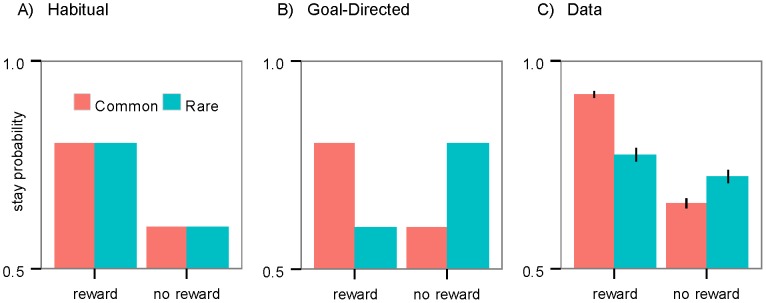Figure 3. First-stage choices.

(A) Modeled habitual action control on the two–stage task: Under habitual control a first stage action that has been eventually reinforced (reward) in the previous trial is more likely to be repeated (higher stay probability), regardless of whether the repeated action commonly leads to the same slot machine (common) or not (rare). (B) Modeled goal-directed action control on the two–stage task: Under goal-directed action control a reinforced action is repeated if it commonly leads to the same slot machine in which reward is received, otherwise the other action is selected. (C) Data from the experiment: Actual stay probabilities averaged over all subjects and trials. When the previous trial was rewarded, stay probability was generally higher (as in habitual control), and was also higher when the previous trial was a common transition (as in goal-directed control). Thus, the responses of the subjects in the experiment were found to be a mixture of both habitual and goal-directed action control. Error bars: 1 SEM.
